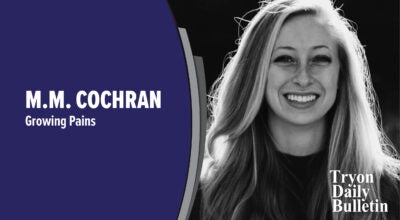Trans fats detriment to health
Published 9:42 am Friday, February 11, 2011
Did you know much of the processed food you eat contains a killer?
That’s right…a killer.
“Trans fat” is so dangerous that the Food and Drug Administration requires it to be identified on food labels.
What exactly are trans fats, and why are they so bad for us? Trans fats are the result of the hydrogenation of edible oils. The first step in hydrogenation is the crushing of corn, soybeans, sun flower seeds or cotton seeds. This yields oils that do have nutrient value. However, then these oils are refined with deodorizing agents and bleaches.
As the process of hydrogenation continues, a small amount of a metal catalyst, like nickle is added to quicken this process. The hydrogenation process is completed by infusing hydrogen gas at very high pressure and heat.
This process changes the “molecular” configuration of these once safe, healthful oils, and thus creates a more “plastic” like substance, that is thicker and can hold a shape. In fact, once this process is complete, the resulting product is not an actual oil at all.
This new product is now solid at room temperature. Trans fats are found nowhere in nature. So why produce hydrogenated oils anyway?
Food manufacturers love hydrogenated oils, because they are inexpensive and easy to produce. They have no flavor, so taste and scent can be added later. They also have a long shelf life. Shelf life is the length of time a product can remain on a shelf before becoming stale. Fast food restaurants love hydrogenated oils, because they keep those fries, chicken nuggets and fish nice and crisp.
Some of the myriad of foods that may also contain hydrogenated oils, and therefore trans fats include, cereals, canned soups, canned beans, pastas, chilies, sauces, cookies, crackers, and other baked goods, stuffing and lunch meats.
Frozen foods can be loaded with trans fats. Stick margarine, and shortenings like “Crisco” are also filled with trans fats. So, which foods don’t contain trans fats?
All unprocessed fruits, vegetables and meats. All canned fish. Even unprocessed oils are trans fat free. Now that we know what trans fats are, why are they so bad for us?
Trans fats wreak havoc with our cells. They create a surplus of “wrong fats” within our cells. This results in the damaging of cell membranes. In fact, the whole integrity of our cells may be compromised. The resulting damage doesn’t happen right away…much like damage done from smoking, but make no mistake, trans fats do destroy our cells. Much of the damage is done to heart cells and the entire circulatory system.
Trans fats make arteries soft and weak. These fatty acids even raise LDL (bad) cholesterol levels, while lowering HDL (good) cholesterol levels. Trans fats can be passed from a pregnant woman’s placenta to her unborn child. Diets high in trans fats also correlate with the risk for Type 2 diabetes.
When it comes to the amount of trans fats in food…don’t think that just because you read 0.5 to 1.0 grams of trans fat on a nutrition label, that there’s no danger. Amounts of trans fats 1.0g and under can still be very detrimental to your health. Also, it’s possible for a nutrition label to claim “0g” trans fats, while still containing trans fats. If a food product contains less than 0.5 grams of trans fat, the FDA permits the labeling to read “no trans fat.”
When perusing food product labels, don’t just look at the advertising, read the ingredient panel as well. If the words “hydrogenated” or “partially hydrogenated” appear, be assured, you’re getting “trans fats.” Now for the good news. Trans fats will be eliminated from your cells when you no longer consume them. “Healthy” fatty acids will replace those trans fatty acids within those same cells. However, cellular damage already done can’t be reversed, but will be halted the moment consumption of trans fats stops.
Next week we’ll explore the other types of fats, and the role they play with our health.
Diet or exercise question?
E-mail me at dwcrocker77@gmail.com or visit fitness4yourlife.org David Crocker of Landrum has served as strength director of the Spartanburg Y.M.C.A., strength coach S.C. State champion girls gymnastic team, USC-Spartanburg baseball team, Converse college equestrian team, lead trainer to L.H. Fields modeling agency, taught four semesters at USC-Union. David was also a regular guest of the Pam Stone radio show.





